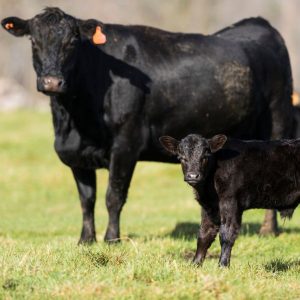 The outlook of higher calf prices this year may have you excited to sell calves. However, weaning shouldn’t be an afterthought if you want to capture the most potential profit for your calves.
The outlook of higher calf prices this year may have you excited to sell calves. However, weaning shouldn’t be an afterthought if you want to capture the most potential profit for your calves.
A study from 2017 suggests calves that go through a weaning program conservatively see sale prices increase on average from $50 to $75 per head. Similarly, an Oklahoma State University study showed calves weaned for a minimum of 22 days had reduced shrink paired with higher sale-day weights than those weaned and sold within a 24-hour period.
By taking advantage of a full weaning program, you’ll also help set up your replacement heifers up for long-term success.
Use the following weaning essentials to help get the most out of your calf weaning program:
- Facilities
The types of pens calves are weaned in can vary by region. The most important requirement is that calves can’t crawl through the fence since they likely want to be back with the cows in the first few days of weaning. Having shade available, like a loafing shed, is a bonus to help get calves out of the sun or elements.
- Feeders
Place any feeders perpendicular to the fence. As calves pace a pen, they will stop and walk into the feeder, helping ease their stress and increase feed intake. Bunk space is key to allow all calves to be fed at the same time. Each calf needs approximately a foot of bunk space or, if you’re using a calf starter feed with intake control properties in a self-feeder, each calf only needs 6-8 inches of bunk space.
- Starter feeds
The starter feed needs to meet calves’ nutrient requirements to help limit stress. To help prepare calves’ natural defenses, Purina starter feeds contain RX3 Immune Support Technology. The starter lineup includes Purina Precon and Purina Accuration Starter complete feeds and Purina Stress Care 5 supplement feeds.
- Mineral
Trace minerals help support immune health, and for this reason, the Purina Stress Tub is a great option during weaning. A mineral tub also helps calves produce saliva, which buffers the rumen and aids in feed efficiency. Placement of mineral tubs is key. Put mineral in the back of the pen, so timid calves are more likely to find it.
- Hay
If you don’t use a complete starter feed, ensure your calves are receiving quality hay with greater than 8% protein that can be easily accessed free-choice. Weaning is not the time to make cattle clean up hay. Ensuring that free-choice hay is available is crucial to the success of the program. When using a bale feeder, you may need to fluff up bales periodically so calves can get enough roughage.
- Water
Feed intake is driven by water intake. You want cattle to consume 2.5-3% of their body weight in feed in the first 7-10 days post-weaning. Make sure you have enough water sources available so multiple calves can access it at once.
- Vaccinations
A variety of vaccines can be administered at weaning to deal with diseases such as Bovine Viral Diarrhea (BVD), Pasteurella, Bovine Respiratory Disease (BRD), pinkeye, blackleg and more. Work with your veterinarian to create a vaccination protocol that will optimize the health of your calves.
- Dewormers
Get your calves dewormed to control internal parasites that rob nutrients from calves. A deworming protocol under the guidance of your veterinarian can help calves better utilize feed resources for growth.
A well-prepared calf weaning program can be an effective way to help capitalize on markets while helping ensure your herd’s future success.
Elizabeth Backes-Belew, Ph.D., Nutritionist, Beef Technical Solutions

